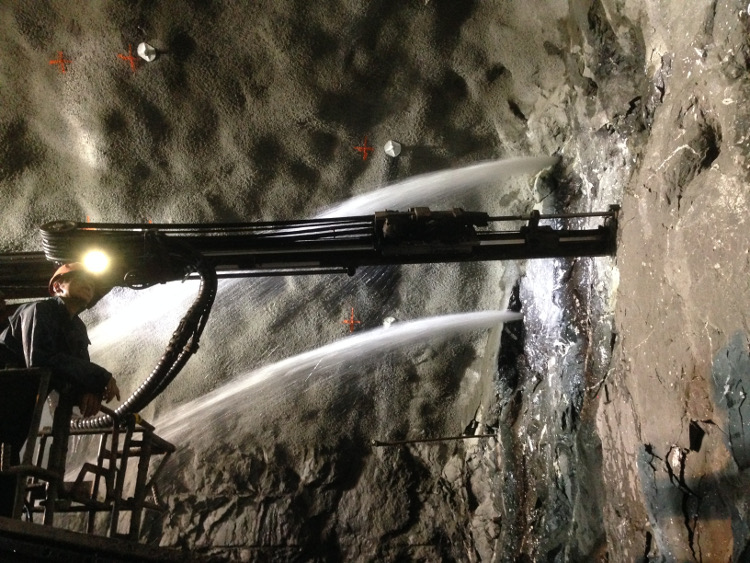Extensive grouting program in Iceland 29 Mar 2016
Excavation is scheduled to restart next month (April) at the east end of the 7,200m-long Vadlaheidi road tunnel in Iceland – almost a year after suffering a major collapse and flood at a fault zone.
A significant program of consolidation grouting and ongoing pump-out of groundwater inflows has been under way to prepare for resumption of drill+blast excavation. Support is to include forepoling, steel beams, lattice girders, mesh and shotcrete through the local weak zone, after initial excavation passes through the zone of consolidated collapse debris.
The project has continued drill+blast counter-excavation from the opposite end of the single tube alignment, but progress there has been hindered by hot geothermal inflows requiring large volumes of grouting before each excavation round. Consequently, the advance rate from the west has been restricted to approximately 20-40m per week for some months.
The original construction schedule envisaged completion of main tunnelling work by September 2015, but the complex geological and groundwater challenges experienced at both headings mean only about 70% of the tunnel has so far been excavated. The project is now at least a year behind schedule.
Contractor Osafl – a joint venture of Icelandic company IAV and Swiss contractor Marti – started blasting operations from the eastern end of the alignment in September 2014. Progress initially went well but in early 2015, when the face had passed beyond a fault zone, the tunnel roof collapsed. As a result the tunnel was flooded back up to the crest, leaving most of its length in that stretch fully submerged.
The floodwater was pumped out in October (2015), but according to Bjorn Hardarson, Chief Supervisor for the client, inflows of 100 litres/sec still need to be managed. In December (2015) an array of investigation holes were drilled overhead and into the fault zone. Then, in January (2016), rock support was installed in front of the collapse zone, and drainage holes drilled.
Consolidation grouting began in February. A total of 27 holes were drilled, to lengths of 15–20m, as part of an operation to inject 45 tonne of grout, explained Hardarson. Further consolidation work at the location of the fault debris is ongoing, with self-drilling anchors and 90mm steel pipes. It is anticipated that initial excavation will be ready to resume within a few weeks.
At the west end of the project approximately 3.5km of excavation has been completed, though over recent months the advance rate has been very slow due to hot rocks and geothermal inflows. The major ongoing grouting required to stem the inflows enables a maximum advance of only 40m per week. However, water temperatures have reduced to about 55°C from earlier peaks of 65°C, said Hardarson.
References
- Collapse and flooding delay progress in Iceland – TunnelTalk, June 2015
- Battling geothermal challenges in Iceland – TunnelTalk, Nov 2014
- Iceland awards its longest road tunnel – TunnelTalk, Feb 2013
|
|
|
|
|
Add your comment
- Thank you for taking the time to share your thoughts and comments. You share in the wider tunnelling community, so please keep your comments smart and civil. Don't attack other readers personally, and keep your language professional.


-end_Geotek_March-2016_1.jpg?v=dc770ab8ab4f184cee42288eeb1519e4256ffd78)
